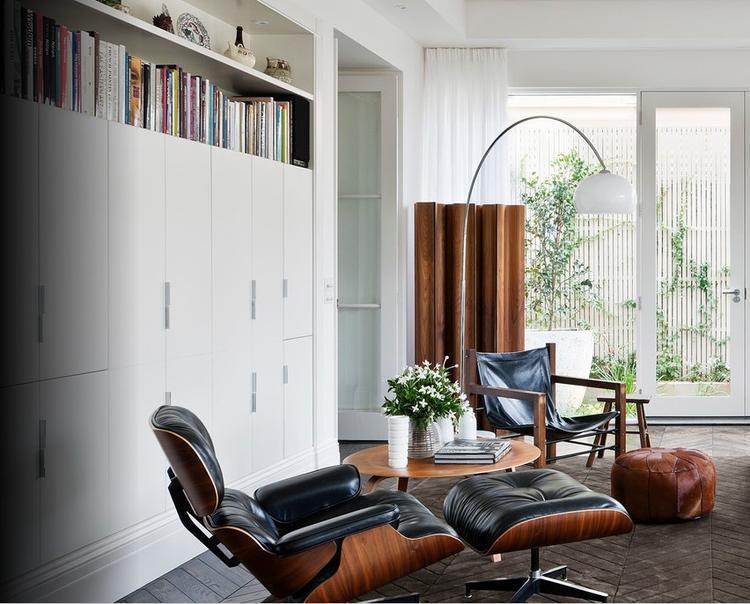First published in the December issue of Renegade Collective magazine
There are three things that Adi Tatarko believes in. The co-founder of Houzz, the explosive online platform credited with disrupting the US$300 billion home remodelling industry, knows that reconciling the needs of a six-month old baby and two young children with those of an online business that commands a 20 million-strong monthly user base means giving up dinner parties and hiring someone to do the cooking. Adi’s certain that swapping group meetings for one-on-ones is the most productive way to steer a fast-growing global team based in California, London, Berlin and Sydney, where she’s about to launch an Australian office. And she believes that emotion, a quality that rarely figures in the tech industry lexicon, is at least as important as data and analytics when it comes to growing a company intent on streamlining the painful home renovation process and capturing users’ hearts.
“The home renovation process is highly emotional,” she tells me, in an accent that’s an even split between Palo Alto, New York and Tel Aviv. “It’s the left side of your brain that connects you to where you live. It tells you that this is where I get up in the morning, this is how I feel about myself and this is how I want other people who visit my house to think about me. All these things are so emotional and important that they demand working with the right professionals. This won’t come from just seeing an ad in a random directory. It will come from being part of an amazing community and having the transparency and technology to access thousands of professionals around you.”
It’s taken firsthand experience to glean this wisdom. In 2009, Adi and her husband Alon Cohen, set out to remodel their Palo Alto ranch to better accommodate their growing family only to find their vision threatened by countless obstacles.
“Alon and I had big dreams – it was our first real home together and we thought that it would be so wonderful to renovate it and make it ours but the whole process was really broken,” says Adi, who had just thrown in a gruelling sixteen-hours-a-day job in high technology to work in a boutique investment firm. “We’re not designers or architects so finding the right inspiration and materials, the people who would help us build what we wanted and educating ourselves about how we would translate the home in our minds into a reality was very difficult. You invite strangers to renovate your home and spend so much money and energy just to overpay and end up with something you didn’t want from the beginning. We felt like the expectations weren’t right and the educational pieces weren’t there and that this frustration was the common ground.”
For most couples, a family holiday might be enough to vent this frustration but in the case of Adi, whose rapid-fire dialogue hints at razor-sharp intelligence and Cohen, who helped develop eBay’s revolutionary API, you get the feeling that inaction was never an option. The duo enlisted Bay Area designers and architects and rallied together a group of 20 homeowners – mostly parents from their children’s school – to build an online platform that would match users with the right experts.
“It was our pet project and we were sweating – working on weekends, whenever we had the time while raising our kids,” she recalls. “From the early days, we knew that it was never about making money or building a big business but about using the the best technology to innovate and create a product that people would love to use.”
Adi didn’t bank on how quickly people would want to use it. Soon, her inbox was flooded with emails from architects, designers, lighting consultants and landscapers, whose firsthand experience with the downsides of the remodelling industry made them readymade members of the Houzz community. In 2010, the company attracted a $US 2 million investment from venture capitalist Oren Zeev, the first in a series of funding rounds that included an $US11.6 million injection from Sequoia Capital and a recent US$150 million raise that put its market valuation at $US2.3 billion.
This trajectory might read like the stuff of startup fantasies, but it wasn’t something Adi had bargained on from the outset. Ironically, her insistence on bootstrapping the business by incorporating feedback from the community and operating on a shoestring was precisely what made Houzz attractive to investors.
“When we started out, we had no resources but this was actually okay because it taught us to focus on the product,” she explains. “We worked very closely with our community to get feedback on what’s working and what wasn’t. For a long time we felt like it was our thing and that we wanted to do it all by ourselves but at some point somebody convinced us that it was okay to accept investment. The fact that we could take the money and bring more people on board to help us grow it was meaningful. But I think that because we kept things really lean and tailored the product to the industry, we we were able to grow from 20 people to 20 million people. Both of us could do every single thing in the company and this really helped us along the way.”
In 2012, CNN famously named Houzz the Wikipedia of interior design but speaking about the platform purely in terms of the catch-all online encyclopaedia risks overlooks its specificity. Although the site lists 400,000 professionals based everywhere from Cape Town to Seattle and plays host to over 4 million home design photos uploaded by users, it also features articles on how to transform a lacklustre residence into a Parisian apartment, tips on making the most of a small wardrobe and ideabooks that explore the art of decorating with vintage industrial. Houzz’s appeal stems from an ability to combine the practical nature of a directory with the glossy promise of a design magazine.
“You can click on a picture you like, discover the materials you want to use, browse a person’s portfolio and collaborate with them,” says Adi, who’s employed a team of PHD researchers to fine-tune the platform’s impressive personalisation. “It’s been amazing to help experts find home owners and vice versa and we have many professionals from all over the world who are flying overseas and providing their services. Now, that we’re opening international offices and have people on the ground working with the community, it’s so exciting to see the data that’s coming from different parts of the world.”
Adi, who reveals that Houzz had over 10,000 Australian service providers and 700,000 users before launch, says that the possibilities that come from marrying the local with the global represents the platform’s thrilling next phase.
“We’ve been getting these emails from around the world about how much Houzz has changed the way businesses work with clients and about how everyone’s so happy and educated,” she says with a laugh. “People overseas would love to see Australian houses decorated for Christmas in summer and although users want to see products in the local currency, they can access millions of images from different countries at the same time. This transparency when it comes to service providers, people and ideas is an amazing thing that we’re not going to block.”

